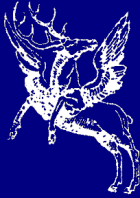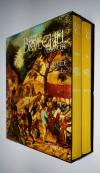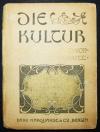Geometry
Die Liste enthält 3 Einträge. Suchergebnisse löschen und Gesamtbestand anzeigen.
| Abbildung |
Beschreibung Gesamte Buchaufnahme |
Preis EUR |
|
|---|---|---|---|
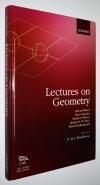 |
Witten, Edward, Marc Lackenby, Martin R. Bridson, Helmut H. W. Hofer and Rahul Pandharipande. Lectures on Geometry. Edited by N. M. J. Woodhouse. Oxford, Oxford University Press USA (2017). Gr.-8°. 188 S. mit einigen Figuren im Text. Illustr. OPbd. (Clay Lecture Notes Series).
First erdition. – Very fine, tadellos. Schlagwörter: Geometrie, Geometry, Mathematics, Mathematik |
60,-- |  |
 |
Abdank-Abakanowicz, Br(uno). Les intégraphes. La courbe intégrale et ses applications. Étude sur un nouveau système d’intégrateurs mécaniques. Paris, Gauthier-Villars 1886. Gr.-8°. X, 156 S. 94 Holzstichen im Text. OHln. mit goldgepr. Rückentitel (vord. Orig.-Umschlag beigebunden).
Polski Slownik Biograficzny I, 1 f. Thomash/Williams A 1. – Erste Ausgabe. – Mit eigenhändiger Widmung von (inscribed by) B. Abdank-Abakanowicz „Hommage de l’autheur B. abdank-abakanowicz 5 place du Panthéon Paris“. – Eine deutsche Übersetzung von Emil Bitterli erschien 1889 in Leipzig. – „The integraph is a noteworthy development in the history of calculating instruments. While the principle on which it is based was introduced by Coriolis in 1836, it was in 1878 that Abdank-Abakanowitz first developed a practical working model. The integraph is an elaboration and extension of the planimeter, an earlier, simpler instrument used to measure area. It is a mechanical instrument capable of deriving the integral curve corresponding to a given curve. Hence, it is capable of solving graphically a simple differential equation. Sets of partial differential equations are commonly encountered in mathematical physics. Most branches of physics such as aerodynamics, electricity, acoustics, plasma physics, electron-physics and nuclear energy involve complex flows, motions and rates of change which maybe described mathematically by partial differential equations. A well-established example from electromagnetics is the set of partial differential equations known as Maxwell’s equations. In practice, differential equations can be difficult to integrate, that is to solve. The integraph is capable of solving only simple differential equations. The need to handle sets of more complex non-linear differential equations, led Vannevar Bush to develop the Differential Analyzer at MIT in the early 1930s. In turn, limitations in speed, capacity and accuracy of the Bush Differential Analyzer provided the impetus for the development of the ENIAC during World War II. Abdank-Abakanowicz’s instrument could produce solutions to a commonly encountered class of simple differential equations of the form dy/dx = F(x) so that y = ò F(x)dx. The basic approach was to draw a graph of the function F and then use the pointer on the device to trace the contour of the function. The value of the integral could then be read from the dials. The concept of the instrument was taken up and soon put into production by such well known instrument makers as the Swiss firm of Coradi in Zurich“ (E. Tomash). – Der polnische Mathematiker und Elektrotechniker B. Abdank-Abakanowicz (1852-1900) war nach seinem Ingenieur-Studium am Polytechnikum Riga Dozent für Mechanik in Lemberg. „Dort begann er seine Studien zur Planimetrie, die zum Bau des sog. Integrators führten, das zur zahlenmäßigen Darstellung von Infinitesimalrechnungen dient. Eine Beschreibung dieses mathematischen Instruments veröffentlichte Bruno Abakanowicz 1880 in „Rozprawy i Sprawozdania Wydzialu matematyczno-przyrodniczego Akademii Umiejetnosci w Krakowie“ sowie in der Warschauer Zeitschrift „Inzynierya i Budownictwo“. … Um 1880 erfanden er und der britische Physiker Sir Charles Vernon Boys unabhängig voneinander den Integraphen. 1881 siedelte Bruno Abakanowicz nach Paris um, wo er eine elektrotechnische Werkstatt errichtete. 1882 wurden schließlich noch drei Abhandlungen hierzu in den „Comptes rendus“ an der Pariser Akademie der Wissenschaften veröffentlicht. Kurze Zeit später wurde er zum Direktor der Betriebe der Compagnie française du procédé Thompson-Houston berufen. In diese Zeit fällt der Bau einer elektromagnetischen Klingel für Eisenbahnsignalanlagen sowie ein neuer Typ von elektrischen Lampen. Im Jahre 1889 übertrug ihm die französische Regierung die Leitung der Verhandlungen mit den USA bezüglich ihrer Teilnahme an der Weltausstellung Paris 1889. In demselben Jahr wurde ihm das Kreuz der Ehrenlegion verliehen“ (Wikipedia). – Rücken u. Kanten etwas berieben, mehrfach gestempelt (TH Wien, „Ausgeschieden“), das erste Bl. etwas gelockert, sehr gutes Exemplar. – The Polish mathematician and electrical engineer B. Abdank-Abakanowicz (1852-1900) was a lecturer in mechanics in Lviv after studying engineering at Riga Polytechnic. “There he began his studies on planimetry, which led to the construction of the so-called integrator, which is used for the numerical representation of infinitesimal calculations. Bruno Abakanowicz published a description of this mathematical instrument in 1880 in “Rozprawy i Sprawozdania Wydzialu matematyczno-przyrodniczego Akademii Umiejetnosci w Krakowie” and in the Warsaw journal “Inzynierya i Budownictwo”. … Around 1880, he and the British physicist Sir Charles Vernon Boys independently invented the integraph. In 1881 Bruno Abakanowicz moved to Paris, where he set up an electrotechnical workshop. In 1882, three papers on the subject were published in the “Comptes rendus” of the Paris Academy of Sciences. A short time later, he was appointed director of the operations of the Compagnie française du procédé Thompson-Houston. During this time, he built an electromagnetic bell for railroad signaling systems and a new type of electric lamp. In 1889, the French government put him in charge of negotiations with the USA regarding their participation in the 1889 Paris World’s Fair. In the same year, he was awarded the Cross of the Legion of Honor” (Wikipedia). – Spine and edges somewhat rubbed, stamped several times (TH Wien, “Ausgeschieden”), otherwise well preserved. Schlagwörter: Computer, Elektrotechnik, Geometrie, Geometry, Mathematics, Mathematik, Mathématiques, Mathematisches Instrument, Signierte Bücher, Widmungsexemplar |
500,-- |  |
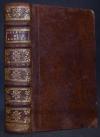 |
Barrême, N(icolas). L’arithmétique. Ou le livre facile pour apprendre l’arithmétique de soi-même, & sans maître. Nouvelle édition, augmentée de plus 190 pages… Paris, Gandouin e.a. 1788. Kl.-8°. xvi, 491, [81] p. avec title et frontisp. in gravure sur bois et quelques figures geometrique dans la texte. Ldr. d. Zt. mit goldgepr. Rückenschild u. reicher floraler Rückenverg.
Zuerst 1736 erschienenes erfolgreiches Lehrbuch. – Einband etwas berieben, eine Seite mit zeitgenöss. Anmerkungen im unteren w. Rand, hinterer Vorsatz mit handschr. Zahlentabellen, stellenweise leicht gebräunt u. leicht braunfl., gutes dekorativ gebundenes Exemplar. Schlagwörter: Arithmetic, Geometry, Mathematics, Mathematik, Mathématiques, Surveying |
60,-- |  |
|
Einträge 1–3 von 3
Zurück · Vor
|
|||
| Seite: 1 |

